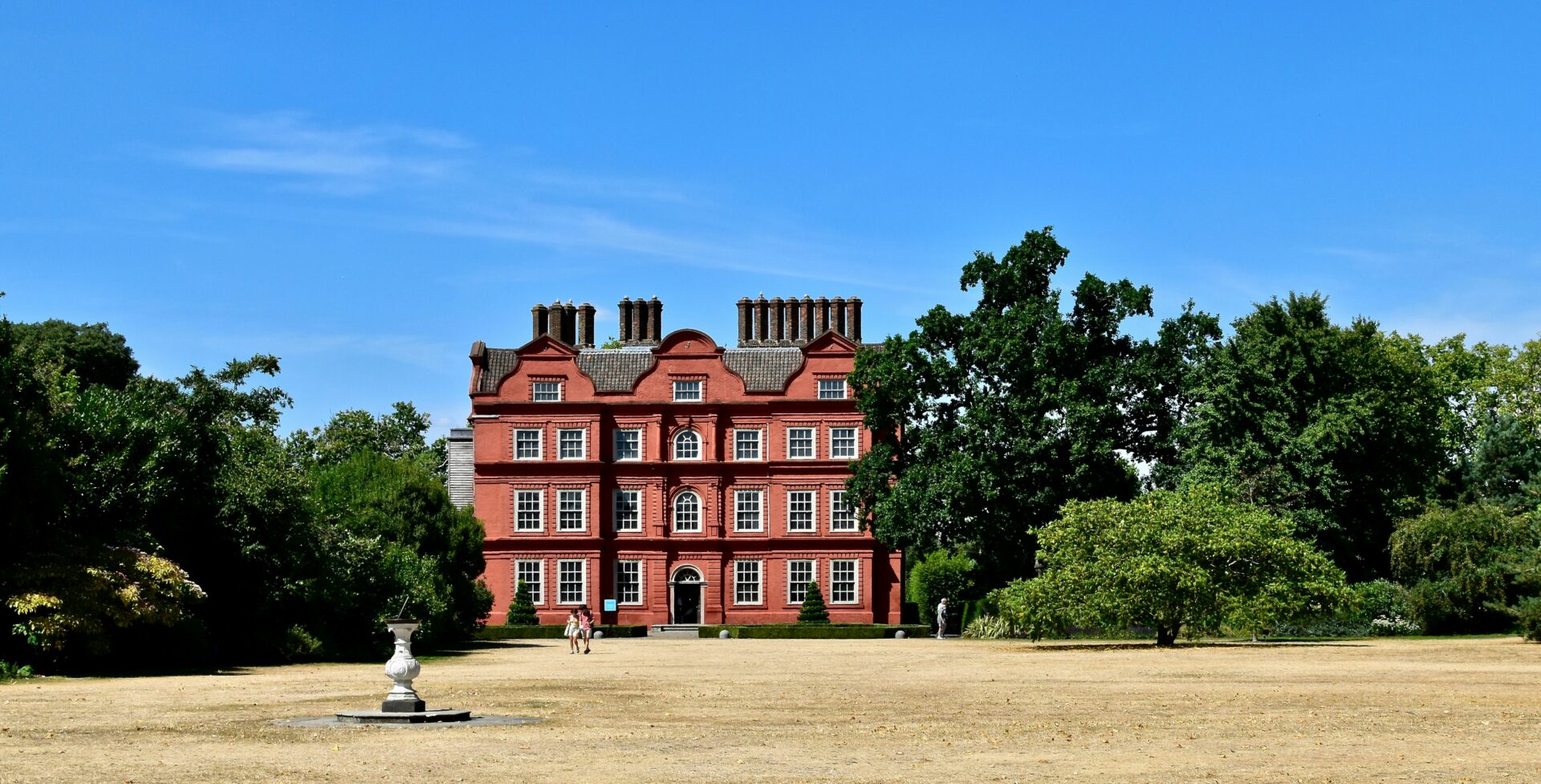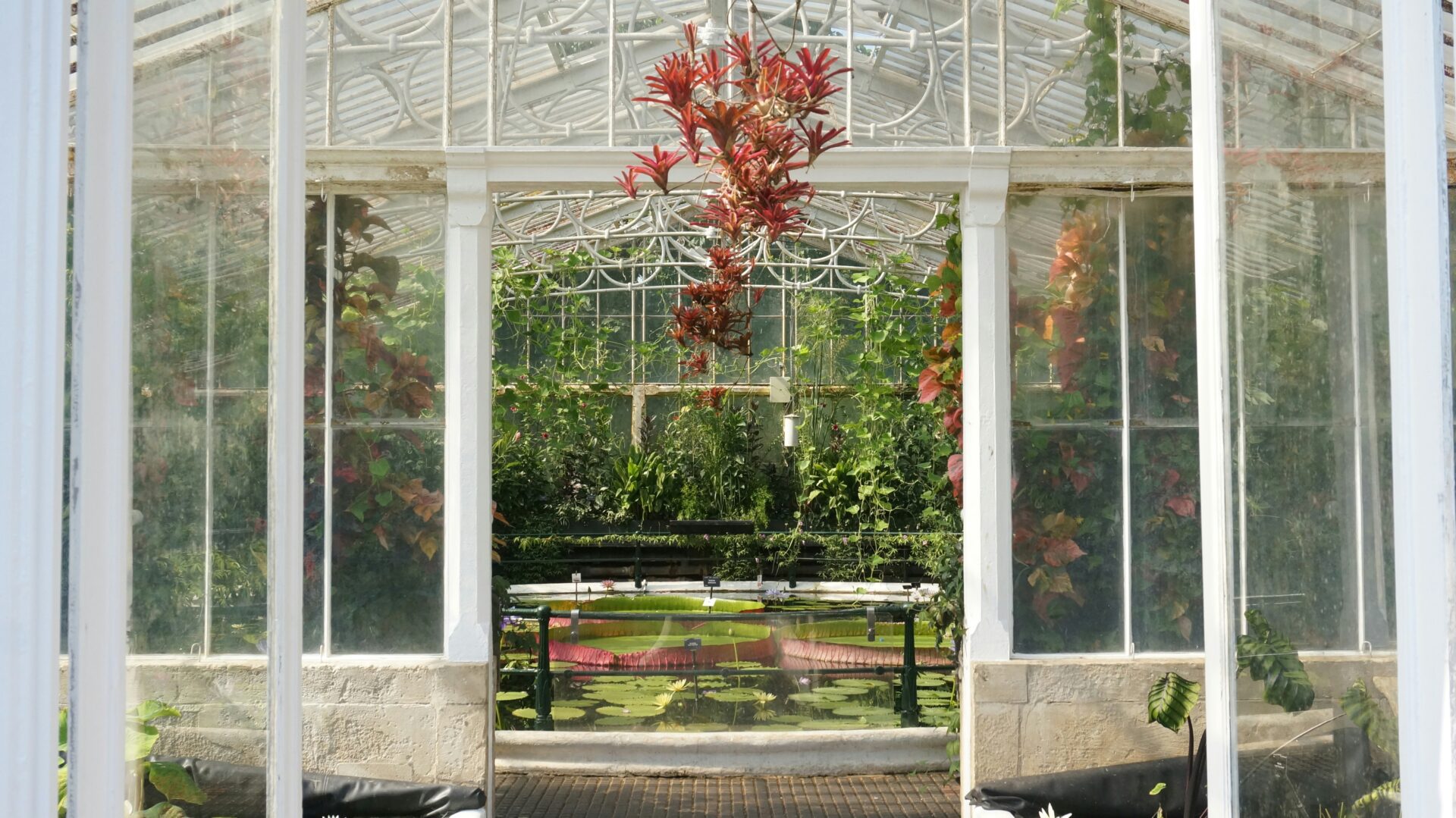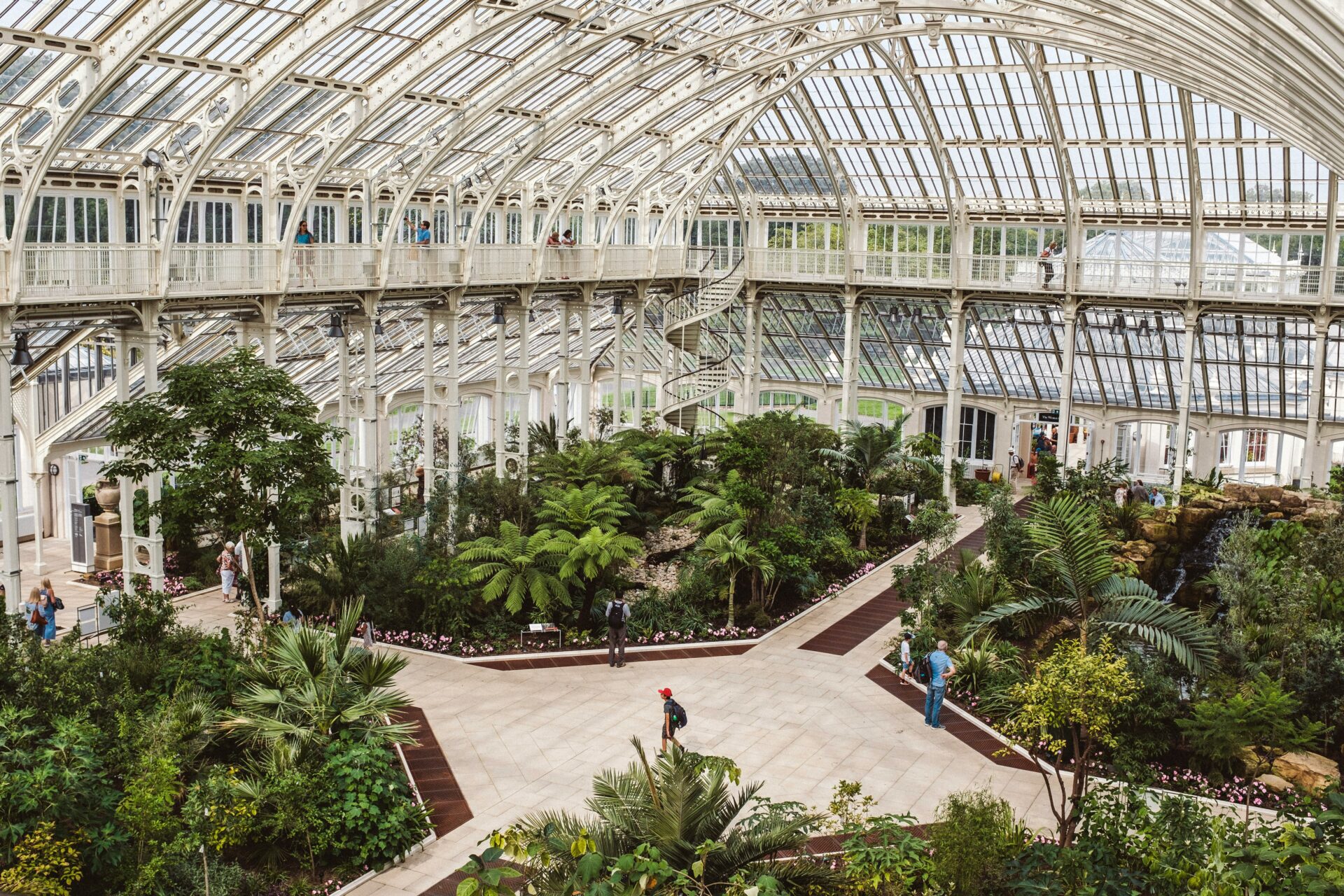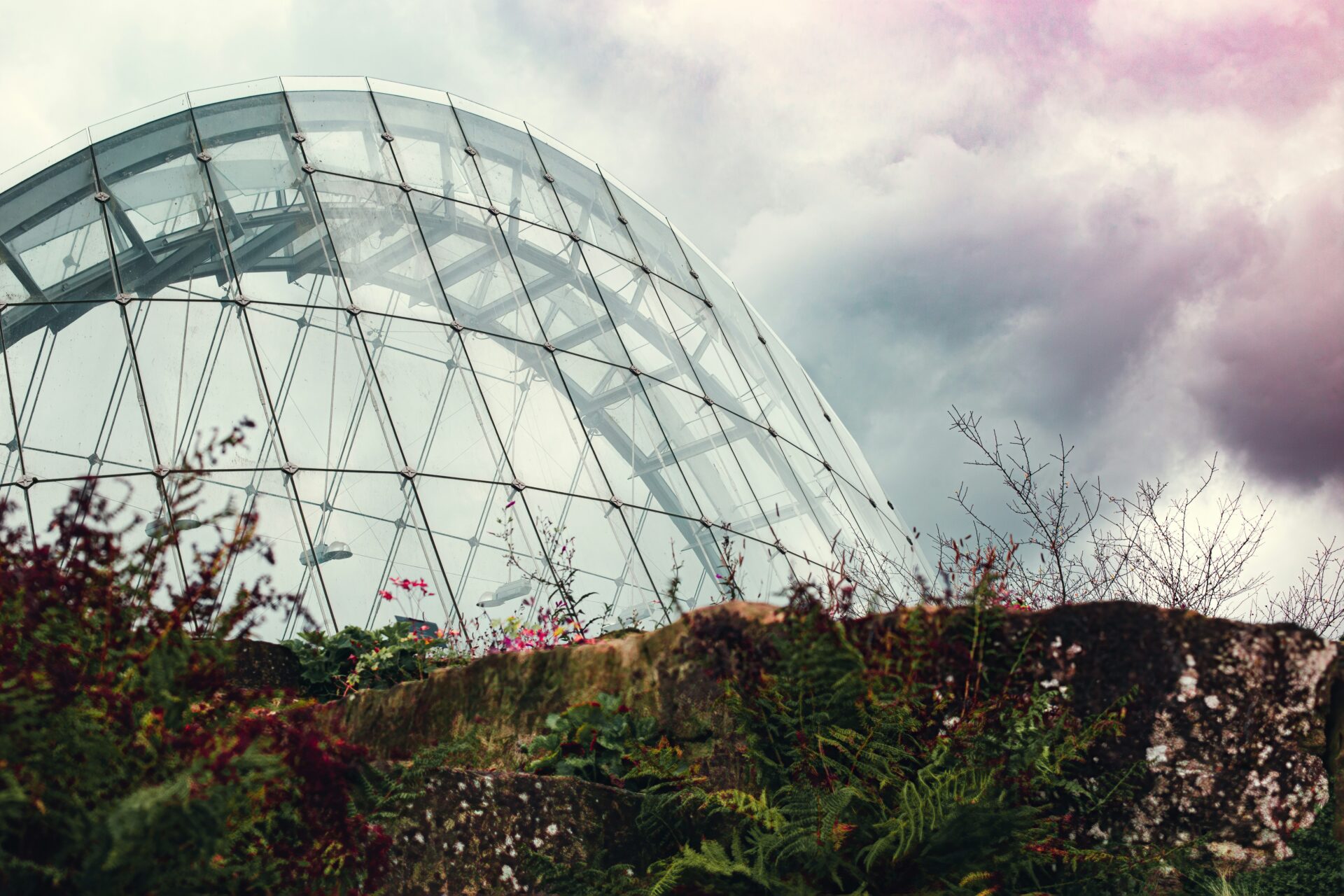When I walked through Kew Gardens in London, I felt like I’d wandered into a living museum. This Royal Botanic Garden isn’t just a peaceful escape—it’s a UNESCO World Heritage Site, packed with rare trees and over 50,000 plant species. Kew Gardens has everything from the steamy, tropical Palm House to the sweeping views up on the Treetop Walkway.
Every path led me somewhere new. Sometimes I’d step into a glasshouse with a rainforest vibe, other times I’d look down on the gardens from above. I found plant species I’d never heard of and learned how conservation teams protect them.
Visiting Kew felt like a real adventure, but also a reminder of why these gardens matter. If you’re curious about nature or just want a fresh London experience, Kew Gardens brings wonder and knowledge together in one place.

The Living Tapestry of Kew Gardens
As I wandered Kew Gardens, it felt like I was in a world where nature, history, and stories all tangled together. Every corner brought something different—vivid themed gardens, buildings with royal ties, and spots with global significance.
Exploring Iconic Gardens
The Palm House was one of my first stops. This huge glasshouse stands out, filled with towering palms and rare tropical plants. The warm, humid air and dense greenery made me forget I was still in Richmond.
Further along, I ran into the lively Rose Garden and the serene Japanese Landscape. I could sit, watch people admire the flowers, listen to birds, or just breathe in the drifting scents.
The Treetop Walkway quickly became a highlight. Eighteen meters above ground, I got a bird’s-eye view of the gardens and spotted the Temperate House in the distance. Kids and adults alike seemed to love the thrill.
I also checked out the Waterlily House with its floating lilies, and the Princess of Wales Conservatory where deserts and jungles somehow fit side by side. It’s wild how many environments Kew squeezes into one place!

Historic Landmarks and Royal Connections
Kew Gardens isn’t just about plants—it’s steeped in royal history. I found Kew Palace, the former home of King George III and Queen Charlotte. The small red-brick palace sits quietly, a reminder that royals once wandered these same paths.
Queen Charlotte’s Cottage is another hidden spot, showing off a simpler royal retreat. There are stories everywhere—like King George III’s love for garden walks.
Many of the garden’s features came about during those royal days. The Great Pagoda, built in 1762, towers above the trees and offers a climb for anyone up for it. When I reached the top, I felt like I could see forever.

UNESCO World Heritage Site Designation
In 2003, UNESCO named the Royal Botanic Gardens at Kew a World Heritage Site. That means Kew is recognized around the globe for its historic gardens, plant collections, and scientific work.
I found out UNESCO picked Kew for its role in gathering plants from everywhere and helping protect threatened species. There’s this ongoing dance between beauty and science, with teams researching everything from tropical trees to medicinal herbs.
Signs all over the gardens explain Kew’s global partnerships and conservation projects. Standing in the middle of it all, I got why it’s so special—the mix of culture, history, and nature is honestly unmatched.

Marvels of Glass and Green: The Glasshouses
Stepping into Kew’s glasshouses, I felt whisked away to different climates and continents. The wild architecture and rare plant collections make every visit memorable.
Palm House: A Tropical Wonderland
The Palm House always leaves me in awe with its sweeping iron and glass. Inside, the heat and humidity wrap around me, just like in the tropics. I wander among giant palms and spot banana plants reaching up.
Labels point out which tropical plants are endangered. It’s something else to walk through an ecosystem that’s so carefully protected. The Palm House brings together plants from Africa, Asia, the Americas, and the Pacific—all under one roof.
Tip: Climb the spiral staircase for a view over the indoor jungle. Looking down, the sea of green really feels like a rainforest canopy right here in London.

Princess of Wales Conservatory Adventures
This modern glasshouse splits into different climate zones, so I can cross deserts and rainforests in just a few steps. One side’s dry and hot, packed with cacti and succulents. Turn a corner, and suddenly the air’s sticky and alive with orchids and ferns.
The Princess of Wales Conservatory is perfect for learning about how plants adapt. There are bright bromeliads, strange carnivorous plants, and Vanda orchids clinging to branches. I love hunting for hidden flowers and reading signs about their survival tricks.
The building itself catches the eye with its sharp glass walls. It almost feels like stepping into a sci-fi garden.

Waterlily House and Exotic Blooms
The Waterlily House is tiny, but it packs a punch. Humidity hits me as soon as I walk in, and giant green waterlily leaves float across the pool. Sometimes, I spot frogs perched on top.
Around the pool, water hyacinths and odd tropical climbers crawl up the walls. In summer, the Victoria amazonica waterlilies bloom—massive flowers that change color overnight.
Benches along the sides invite a pause. It’s a calm, colorful spot—a true sanctuary inside Kew.

Davies Alpine House Escapade
The Davies Alpine House feels crisp and cool, even on sunny days. I step into this arched glasshouse, surrounded by rock gardens and cushiony alpine plants. The climate mimics mountain regions, with loads of light and fresh air.
In spring and early summer, delicate alpine flowers bloom—tulips, blue gentians, and tiny saxifrages, all labeled for the curious. The vibe is peaceful, a total contrast to the steamy Palm House.
The clever design lets in sunlight without overheating the plants. The architecture feels modern but tranquil, blending style and purpose.

Elevated Explorations: Treetop Walkways and Beyond
From feeling the trees sway up high to peeking into the world under the soil, these adventures at Kew gave me new ways to see plant life. Every step brought a fresh perspective, from leafy canopies to broad, classic vistas.
Walking the Treetop Walkway
Climbing the Treetop Walkway was both thrilling and a little nerve-wracking. At the top, I stood 18 meters (about 59 feet) above the ground, surrounded by branches and birdsong. The steel walkway feels solid, but it sways gently in the wind—definitely adds to the adventure.
From up there, I looked down at the gardens stretching out below. Tall sweet chestnuts and limes seemed close enough to touch. Info boards along the way pointed out the birds and insects calling this canopy home. The panoramic views are perfect for photos, especially when everything’s green and full.
Tips:
- Wear comfy shoes—the steps are a bit steep.
- Go early to dodge the crowds.
- Check out the hidden viewpoints looking toward the Palm House.

Underground Insights at the Rhizotron
After the treetops, I headed underground to the Rhizotron. This quirky tunnel lets you peek at how roots grow and why they matter. I walked through, surrounded by root models and real samples.
I learned how soil supports plants and how roots search for water. Interactive displays showed just how busy life is beneath our feet. Kids seemed to love the hands-on stuff, and honestly, I found it fascinating too.
Some highlights:
- Slices of soil layers
- Touch screens packed with tree facts
- Visuals showing how roots help with water and erosion

Syon Vista and Garden Vistas
Back outside, I got drawn to the Syon Vista. This long, straight path leads your eye right to Syon House, standing tall beyond Kew’s borders. The open vista, lined with trees and neat lawns, feels almost regal.
Along Syon Vista, I found benches for a quick break and admired the classic landscape design. From here, paths split off to other gardens—perfect for exploring.
A few sights you shouldn’t miss:
- Distant views of the Palm House
- Flower beds bursting with seasonal color
- Great spots for wide-angle estate photos
Hidden Corners and Scenic Retreats
Kew Gardens hides plenty of quiet spots where I could slow down and soak in rare plants, historic glasshouses, and unique bridges. These areas blend history, nature, and design, and I always found something new around each bend.

The Rock Garden and Alpine Wonders
Off the main paths, I stumbled into the Rock Garden—a peaceful place shaped by boulders, streams, and alpine blooms. Here, the story is about plants tough enough to survive wind and rocky soil.
Spring and early summer turn the slopes into a patchwork of color. Alpine gentians, saxifrages, and tiny irises bloom in tucked-away corners. Water features and stone bridges make it a restful escape, great for photos or a quiet pause.
Plant tags reveal their mountain origins. Kids love scrambling over the rocks, while adults often stop to admire the textures and scents. I found myself slowing down, noticing the little details on these rugged beauties.

Nash Conservatory and Victorian Greenhouses
At the edge of the Gardens, the Nash Conservatory stands quietly. It’s a grand glasshouse that once lived at Buckingham Palace before being moved to Kew. The tall panes and ironwork are pure Victorian engineering.
Inside, changing exhibitions and educational displays fill the space, shining a light on environmental themes. Unlike the busy Palm House, Nash Conservatory feels calm and bright, with sunlight pouring in. The other Victorian greenhouses, like the Waterlily House, focus on specialty plant collections.
In these glasshouses, it’s easy to imagine Victorian plant collectors and their dreams. I found a peaceful vibe in the warm, quiet corners. Benches along the edges made it a good spot to sit and take in the scene.

Serene Strolls: Sackler Crossing
The Sackler Crossing might be Kew’s most photogenic bridge. This curving black granite walkway cuts across the lake near the center of the Gardens. I enjoyed the smooth stone path and ribbon-like railings, which feel modern but somehow right at home among the trees.
Birds skimmed the water as I crossed. From the center of the bridge, I could see both the glasshouses in the distance and pockets of woodland nearby. Benches at each end invited a quiet moment to watch swans or flip through a guidebook.
I’d suggest coming early or near closing time, when the water is still. The reflections and morning mist turn the spot into something almost magical. It really felt like a hidden slice of calm, away from the crowds.

Aquarium Under Glass
Most visitors probably miss the aquarium hidden below the Palm House. When I stepped inside, I felt like I’d found another secret world at Kew—quiet, filled with tanks of water plants and exotic fish.
The gentle hum and dim lighting made the place feel almost meditative. I wandered between displays focused on aquatic plants and their importance in freshwater and tropical ecosystems.
Signs explained how wetlands clean water and shelter rare species. I spotted water lilies, papyrus, and all sorts of colorful fish darting through roots and stems.
This quiet spot invited me to linger and watch how plants survive underwater. For families, it offered a fun mix of science and wonder, all tucked beneath the huge Victorian glass roof above.
The contrast between the lush jungle overhead and the underwater scenes below really surprised me. Kew Gardens always seems to have something unexpected waiting.

Planning Your Perfect Day Out at Kew Gardens
A bit of planning can make your Kew Gardens visit so much better. From figuring out the best train to picking the right ticket and squeezing in coffee or tea, I found that researching a little ahead of time paid off.
Getting to Kew: Transport and Railway Tips
I started my day early and hopped on the train to Kew Gardens railway station. The station sits just a short walk from Victoria Gate, which is one of the main entrances.
Trains from central London run pretty often, and the Overground’s usually reliable. I always check train times on my phone before leaving, since schedules can change.
Buses stop nearby too, but I find the train more direct and a lot quicker. If you want to drive, parking’s limited and fills up fast, especially on sunny weekends.
Visitors with accessibility needs can use step-free routes from the station right up to the main entrance.
Here’s a travel tip: using a contactless card or Oyster makes everything easier, and you skip the ticket machine queues. The whole process felt smooth and stress-free, so I had more time to enjoy my day.

Tickets and Entry Information
Booking tickets online saved me from standing in a long line at the entrance. I used the official Kew Gardens website and picked a time slot that worked for me.
Entry tickets usually cost less if you get them in advance—just another reason to plan ahead.
Here’s a quick table to compare ticket options:
| Ticket Type | Price (approx.) | Notes |
|---|---|---|
| Standard Adult | £20-£25 | Cheaper online |
| Child (4-15) | £5-£7 | Under 4s go free |
| Family | £45-£55 | For 2 adults and up to 2 kids |
| Concession | £18-£20 | Students, Seniors |
Make sure to bring your email confirmation or print your ticket. Some special areas or tours at Kew need separate tickets, so double-check when you book.
During busy seasons, some attractions like the Treetop Walkway or Palm House get crowded right after opening. I always head to my top spots first—otherwise, you might miss out.

Where to Eat: Coffee, Lunch, and Afternoon Tea
Covering 330 acres on foot made me hungry. Kew has plenty of cafes and restaurants scattered around the gardens.
My favorite coffee stop is the Victoria Plaza Café, close to the entrance. On cold days, I like the Pavilion for a hot lunch.
If you want something a bit fancier, the Botanical Brasserie serves afternoon tea with a view of the lawns. The scones, sandwiches, and cakes tasted as good as they looked.
Bringing your own food? Picnics are allowed outside most enclosed buildings. I saw families spread out on the grass with hampers and blankets.
There are loads of benches and open spaces, so it’s easy to settle down for a picnic in summer.

Seasonal Highlights: Summer Blooms and Picnics
If you visit in summer, you’ll catch Kew at its brightest. The flower beds burst with color, and the rose garden near the Palm House? Absolutely gorgeous.
I wandered through the wildflower meadows and couldn’t resist snapping photos of all the vibrant blooms. Bees darted everywhere, adding a bit of life to every shot.
With longer days and warm weather, people spread out picnic blankets on just about every patch of lawn. There’s a lot of shade under those old, massive trees—honestly, it’s the perfect spot to take a break.
On sunny weekends, especially around noon, the gardens get packed. I usually try to show up early and grab a nice spot before the crowds arrive.
Kew Gardens hosts all kinds of seasonal events in summer, like outdoor concerts and guided walks. It’s always worth checking their website for the latest schedule.
Honestly, bringing a picnic blanket made my day so much better. I can’t recommend it enough for a laid-back visit.

